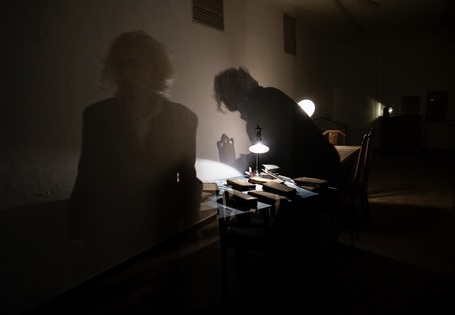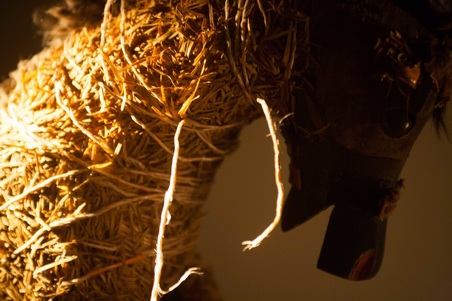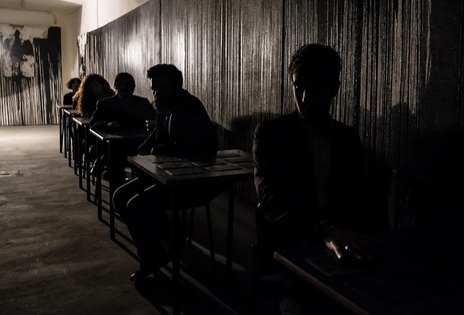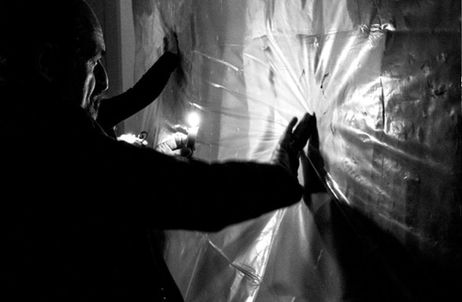WLK
|
WLK Wunder_Litterature_Kammer, ruota attorno al fenomeno delle Wunderkammer, sviluppatesi in Europa nel Rinascimento e trasformate e rimodellate, secondo diverse esigenze e spinte, fino alle avanguardie artistiche novecentesche e alle più recenti ricerche filosofiche-artistiche.
WLK è lo spazio dedicato all’accumulo e alla collezione dove la carta, la parola, l’inchiostro (il litterature presente in Wunder_Litterature_Kammer) divengono il perno simbolico e materiale di una ricerca che spazia dalla scrittura filmica fino alla performance, per la creazione di uno spazio “monstre” ove immettere connessioni fra scritture “minoritarie” e loro implicazioni con scienze ufficiali, realizzazioni di ibride creazioni fra poesia e arte visiva, archivi e apparati di oggetti, suoni e odori. Cara alla dimensione dell’accumulo e della selezione spesso stravagante ed esotica delle wunderkammer, è la prospettiva lirica e soggettiva di chi decide di dare vita ad una collezione legata alle discipline più svariate dello scibile, riunite spesso tramite principi e criteri messi su proprio da chi in maniera individuale e solitaria decide di ricercare nel mondo similitudini, convergenze, disparità, eccezioni ed “ecceità”; questa dimensione è propria non soltanto del collezionista-scienziato-delle wunderkammer, ma, a ben guardare, ben si sposa con la dimensione sperimentale e spesso innovatrice della lirica e dell’arte, dimensione che Jean Starobinski definisce propriamente come la “prospettiva melanconica”, “forse”, a detta del poeta Yves Bonnefoy, “l’elemento che più specificamente caratterizza le culture dell’Occidente”. |
WLK è articolata in diverse stanze-spazi della Biblioteca del Museo Nitsch, le stanze sono numericamente progressive e al tempo stesso labirintiche grazie alla particolare conformazione architettonica degli spazi sotterranei della Biblioteca (ex centrale elettrica che un tempo alimentava il teatro Bellini), che permettono una particolare deambulazione fra i vari spazi, diversi fra loro per metratura e posti su diversi livelli, ma soprattutto grazie alle diverse aperture che ogni singolo spazio contiene e che permette incursioni che sfalsano l’ordine progressivo di ogni singola stanza.
Domenico Mennillo |
WLK
WLK Wunder_Literature_Kammer, revolves around the Wunderkammer, a phenomenon developed in Europe during the Renaissance and afterward transformed and remodeled according to different needs and impetus, up untill the avant-garde art of the twentieth century and to the latest philosophical and artistic research.
WLK is the space devolved to accumulation and collection where paper, words, ink (litterature that are present in Wunder_Litterature_Kammer) become the symbolic and material pin of a research ranging from film writing to performance, with the ultimate goal of creating a “monstre” space where to enter connections between "minorities" writings and their relation to official sciences, hybrid creations between poetry and visual art, archives and apparatus of smels, objects and sounds.
The often extravagant and exotic accumulation and selection marking the wunderkammer, is related to the subjective and lyrical perspective of those who decide to create a collection linked to a wide variety of disciplines often gathered through principles and criteria set precisely by those who in an individual and solitary way, decides to find out similarities, convergences, inequalities and exceptions. This is typical not only of the wunderkammer collector/scientist, but it well matches with the experimental and innovative spirit of lyric poetry and arts, a dimension that Jean Starobinski properly defines as the "melancholic perspective", "Perhaps," according to poet Yves Bonnefoy, "the element that most specifically characterizes the cultures of the West."
WLK went through different rooms and spaces of Museo Nitsch. The rooms were numerically progressive and at the same time labyrinthic, thanks to the particular structure of the underground spaces of the Library (a former power station that once fed the Bellini Theater), which allow a particular walk-in between the various spaces in which the exibition took place, all different from each other by foot and placed on differentgrounds, but above all because of the different openings characterizing each space and which allows for incursions that differentiate the progressive order of each single room.
Domenico Mennillo
WLK Wunder_Literature_Kammer, revolves around the Wunderkammer, a phenomenon developed in Europe during the Renaissance and afterward transformed and remodeled according to different needs and impetus, up untill the avant-garde art of the twentieth century and to the latest philosophical and artistic research.
WLK is the space devolved to accumulation and collection where paper, words, ink (litterature that are present in Wunder_Litterature_Kammer) become the symbolic and material pin of a research ranging from film writing to performance, with the ultimate goal of creating a “monstre” space where to enter connections between "minorities" writings and their relation to official sciences, hybrid creations between poetry and visual art, archives and apparatus of smels, objects and sounds.
The often extravagant and exotic accumulation and selection marking the wunderkammer, is related to the subjective and lyrical perspective of those who decide to create a collection linked to a wide variety of disciplines often gathered through principles and criteria set precisely by those who in an individual and solitary way, decides to find out similarities, convergences, inequalities and exceptions. This is typical not only of the wunderkammer collector/scientist, but it well matches with the experimental and innovative spirit of lyric poetry and arts, a dimension that Jean Starobinski properly defines as the "melancholic perspective", "Perhaps," according to poet Yves Bonnefoy, "the element that most specifically characterizes the cultures of the West."
WLK went through different rooms and spaces of Museo Nitsch. The rooms were numerically progressive and at the same time labyrinthic, thanks to the particular structure of the underground spaces of the Library (a former power station that once fed the Bellini Theater), which allow a particular walk-in between the various spaces in which the exibition took place, all different from each other by foot and placed on differentgrounds, but above all because of the different openings characterizing each space and which allows for incursions that differentiate the progressive order of each single room.
Domenico Mennillo




